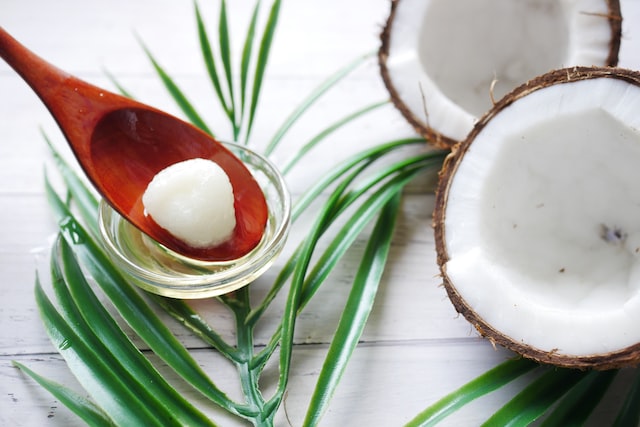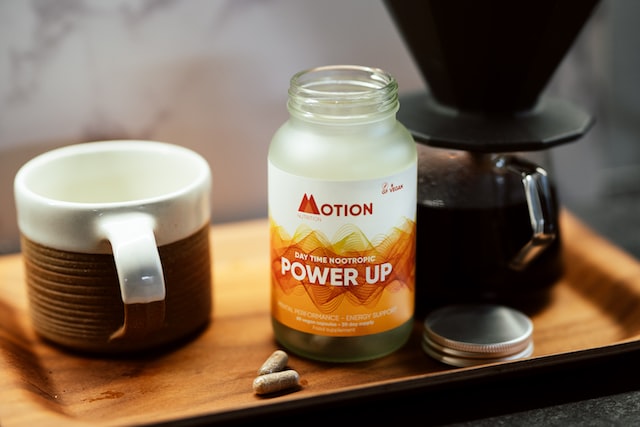It’s no secret that vitamins trend, minerals, and other supplements are big business. The industry is worth an estimated $30 billion in the US alone, and it’s only growing. However, with increased competition in the market, brands need to stay ahead of the curve to continue to attract customers. So what’s next for vitamin trends marketing? Keep reading to find out!
Vitamins Trends & Industry Insight 2023 Predictions
The graphic below breaks down the eight vitamins and nutrition ingredients we believe possess the lowest potential for growth in 2023. Ingredient opportunity scores are determined by looking at both share of voice (a leading indicator of market share) and year-over-year growth rate.
To help brands better understand vitamin trends and the needs of their consumers, we’ve leveraged our White Space AI tool to analyze 125 vitamin ingredients to forecast what will and won’t be trending in 2023.
Coconut Oil

Leading our list is Coconut Oil, which our team predicts will have a negative 39.36 percent year-over-year growth trajectory and 0.10 percent share of voice. Coconut oil has been heralded for its supposed health benefits, including improved heart health and brain function. However, recently these claims have been called into question, which is likely to negatively impact sales of coconut oil supplements like this one in the coming year.
If your brand sells coconut oil supplements, we recommend shifting your marketing strategy to focus on other supposed benefits of the ingredient, such as its moisturizing properties, to maintain positive sales momentum.
DHA

DHA, or docosahexaenoic acid, is an omega-3 fatty acid often found in fish oil supplements. The team here at Simporter predicts that DHA (and supplement options like these) will have a negative 15.45 percent year-over-year growth trajectory and a 0.09 percent share of voice in 2023.
The reason for this forecasted decline is two-fold. First, DHA supplements are ineffective in improving heart health. Second, the FDA has recently cracked down on companies making false claims about the health benefits of their products. As a result, we expect sales of DHA supplements to lose momentum in the coming year.
If your brand sells DHA supplements, we recommend pivoting marketing investment to another omega-3 fatty acid, such as EPA, which is more effective in improving heart health.
Blueberry Extract

Blueberry extract is another ingredient that our team predicts will have a negative year-over-year growth trajectory in 2023. We forecast that this ingredient (0.04 percent share of voice) will experience negative 12.96 percent year-over-year growth.
Science has shown that blueberries aren’t necessarily more effective than other fruits in terms of their nutritional value. Moreover, the health benefits of blueberries are not as impactful when the fruit is consumed in supplement form. So, we expect sales of blueberry extract supplements not to maintain growth momentum from previous years.
Stay on top of vitamin industry news by reading our other blog posts here.
Folic Acid

Often found in leafy green vegetables, legumes, and nuts, Folic Acid is a water-soluble vitamin that is important for pregnant women to take to prevent congenital disabilities. However, our team predicts that Folic Acid holds a negative 10.11 percent year-over-year growth trajectory despite its decent 0.10 percent share of voice. Brands like OLLY, who offer Ultra Strength Prenatal Softgels, obviously still need to cater to the pregnancy market, but should maybe shy away from Folic Acid as their primary focus.
If your brand sells folic acid supplements, we recommend shifting your marketing strategy to focus on other groups of people who could benefit from a folic acid supplement, such as men and women over 50.
Amino Acids

Amino Acids are the building blocks of protein found in meat, poultry, fish, and dairy products. Of course, they can also be taken as supplements. Our team predicts Amino Acids will have a negative 8.88 percent year-over-year growth trajectory and a 0.03 percent share of voice next year.
To stay ahead of the competition, focus on marketing the products as beneficial for people looking to build muscle mass. This will help maintain positive sales momentum and attract more potential customers.
Soy Isoflavones

If you had trouble pronouncing this ingredient, don’t worry — you’re not alone. Soy isoflavones (0.20 percent share of voice) are a type of phytoestrogen, a plant-based compound that mimics the estrogen hormone. Soy isoflavones are often found in supplements that are marketed to women going through menopause.
After crunching the data, we forecast that soy isoflavones will have a negative 5.20 percent year-over-year growth rate in 2023. Soy Isoflavones are not that effective in treating symptoms of menopause, such as hot flashes, so we won’t be surprised to see sales of soy isoflavone supplements losing growth momentum over time.
Zinc

Zinc is an essential mineral in food like oysters, red meat, poultry, and beans. Sold by vitamin industry giants like Nature Made, it’s often taken as a supplement to help boost the immune system. We predict that Zinc will have a negative 3.03 percent year-over-year growth rate and hold on to a significant 0.46 percent share of voice in 2023.
With the COVID-19 pandemic essentially over, we don’t expect people to be as focused on boosting their immune system next year. And, many other ingredients are more effective than zinc in boosting the immune system.
Turmeric

With the highest share of voice by far at 2.96 percent, Turmeric is an ingredient that our team predicts will have a small, but negative year-over-year growth trajectory in 2023 (-0.05 percent). This Indian spice is often found in supplements marketed for their anti-inflammatory benefits.
While Turmeric has some anti-inflammatory properties, it’s not as effective as other ingredients, such as ginger. We believe that the hype around Turmeric has begun to die down, which is why we forecast that this ingredient — and products like this one — will experience a decline in popularity over the next 12-plus months.
Vitamins Trend Solution & Conclusion
While our findings shouldn’t impact what you do and don’t offer, knowing which ingredients are on the decline is critical. This will help you to focus your marketing efforts on other, more promising ingredients.
If you’re looking to stay ahead of the competition and need to continue producing vitamins and supplements with these ingredients, we suggest focusing on Folic Acid, Turmeric, and Zinc. These ingredients still have a relatively high share of voice, and while declining, they are not doing so at an alarming rate. Plus, these ingredients still have some potential – folic acid, for example, is an essential nutrient for pregnant women.
Thanks for reading! We hope this was helpful. For more on 2023 Vitamin and supplement predicted performance, check out our blog.
If you’re ready to see Simporter AI in action and learn what it can do for you, request a demo on our website for more insights on Household Care Stain Removal trends. Predicting need state trends is just one way Simporter can help brands grow their business, so to learn more about how we can help you, please visit us at simporter.com.









